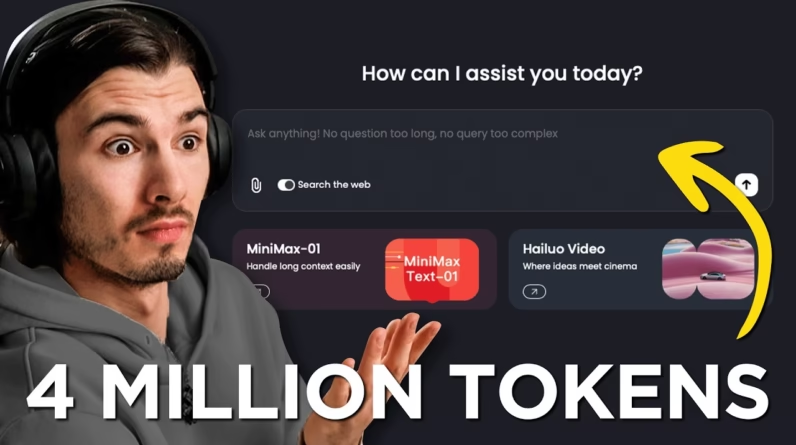
The article presents a comprehensive look at No-Code Development Platforms, focusing on their functionalities and distinguishing features. You’ll explore the similarities and differences between the Projects feature in ChatGPT and Claude, two prominent AI platforms. Insights into the pros and cons of each system will help you decide which tool best suits your specific needs.
As you read through the comparisons, you’ll discover valuable guidance on project creation, key features, and use cases for both platforms. The article also highlights essential factors like collaboration, context windows, and privacy, ultimately revealing which platform emerges as the stronger choice.
Table of Contents
Overview of No-Code Platforms

Definition of No-Code Development Platforms
No-code development platforms are tools that allow users to create applications, websites, and automate workflows without needing to write any code. By utilizing drag-and-drop interfaces, visual designers, and pre-built templates, these platforms simplify the development process, enabling users to focus on functionality rather than programming syntax. This democratization of technology allows individuals from various backgrounds to participate in building their own apps, making technology more accessible to everyone.
History and Evolution of the No-Code Movement
The no-code movement has its roots in the early days of software development, where visual programming environments were first introduced. Initially, these tools were aimed at developers to speed up the coding process. However, as technology has advanced and the demand for faster digital solutions has grown, the no-code movement gained momentum. The 2010s saw a significant shift with platforms like WordPress and Wix enabling non-technical users to create websites easily. Over the years, the rise of powerful cloud computing and mobile applications has further fueled the evolution of no-code platforms, leading to a landscape where even complex applications can be built without a single line of code.
Target Audience and User Demographics
The target audience for no-code platforms spans a diverse range of industries and skill levels. They are primarily aimed at non-technical users such as entrepreneurs, small business owners, marketers, and product managers. Additionally, many professionals in larger organizations use no-code tools to prototype ideas or build internal applications without relying on IT departments. According to recent studies, a significant percentage of users are between the ages of 25 and 45, reflecting a tech-savvy demographic eager to innovate and streamline processes.
Types of No-Code Platforms
Website Builders
Website builders are among the most common types of no-code platforms. These platforms, like Wix, Squarespace, and Webflow, allow users to create websites from scratch using intuitive visual interfaces. By providing pre-made templates and a myriad of customization options, these tools empower users to present their ideas online without needing any technical skills.
App Development Platforms
App development platforms enable users to create mobile and web applications effortlessly. Tools like Adalo, Glide, and Bubble provide drag-and-drop functionalities that let users develop apps for various purposes, whether for personal projects or business solutions. These platforms often include integrations with APIs and third-party services, making it easier to incorporate features into the app.
Automation Tools
Automation tools streamline repetitive tasks by connecting various services and applications. Platforms like Zapier and Integromat allow users to automate workflows by setting triggers and actions without programming knowledge. This feature is particularly valuable for businesses looking to enhance efficiency and reduce manual effort.
Database Management Systems
No-code database management systems help users manage data without needing to understand complex database languages. Tools like Airtable and Knack offer spreadsheets-like interfaces to organize, manipulate, and analyze data. These platforms provide robust functionalities for small to medium-sized businesses, allowing them to create relational databases and manage data operations seamlessly.
Top No-Code Platforms of 2024
Webflow: Features and Use Cases
Webflow stands out as a versatile website builder known for its powerful design capabilities. With features like responsive design, custom animations, and CMS integrations, you can create visually stunning websites that cater to your brand’s unique needs. Businesses use Webflow for marketing sites, portfolios, and e-commerce stores, making it a top choice for creatives and marketers alike.
Bubble: Pros and Cons
Bubble is a leading app development platform that allows you to build fully functional web applications. Its strengths lie in flexible design options and a comprehensive workflow management system. While Bubble offers significant customization and is suitable for MVPs, some users may find the learning curve steeper compared to other no-code platforms. Balancing its powerful capabilities against usability is essential when considering Bubble for your projects.
Adalo: Unique Selling Propositions
Adalo is specifically designed for mobile app creation, making it user-friendly for individuals wanting to build apps quickly. Its unique selling proposition lies in its ability to publish directly to app stores without technical intervention. Adalo allows you to create visually appealing interfaces and integrate databases easily, making it ideal for entrepreneurs looking to bring their ideas to life swiftly.
Glide: Best for Mobile App Development
Glide simplifies mobile app development by converting Google Sheets into functional mobile applications. It operates on a no-code basis, enabling users to design, modify, and publish apps effortlessly. Best suited for business apps and small-scale projects, Glide’s capability to leverage existing data makes it a popular choice for user-friendly app creation.
Comparison Chart of the Top Platforms
Here’s a quick comparison chart summarizing key features of the top no-code platforms of 2024:
| Platform | Primary Use | Unique Features | Best For |
|---|---|---|---|
| Webflow | Websites | Responsive design, CMS | Marketing and Creative Projects |
| Bubble | Web apps | Custom workflows | MVP development |
| Adalo | Mobile apps | Publish directly to app stores | Entrepreneurs and Startups |
| Glide | Mobile apps | Converts Google Sheets to apps | Business solutions |
Benefits of Using No-Code Development Platforms
Empowerment of Non-Technical Users
No-code platforms significantly empower those without technical backgrounds. By removing the barrier of coding, users can instantly bring their ideas to fruition, thus democratizing the development process. This enables a broader range of individuals to solve various problems, fostering innovation and creativity.
Faster Development Times
With streamlined operations and pre-designed components, no-code platforms accelerate the development process. Users can focus on building functionality and design, reducing the time from ideation to launch. This rapid turnaround time allows businesses to stay agile and respond swiftly to market demands.
Cost-Effective Solutions
Utilizing no-code platforms can dramatically lower development costs. By eliminating the need for extensive coding expertise and reducing time spent on projects, businesses can reallocate resources to other critical areas. This affordability makes no-code an attractive option for startups and small businesses with limited budgets.
Encouragement of Innovation and Creativity
No-code platforms encourage users to explore new ideas without the fear of failure. Users can experiment with various features and designs, enabling them to take risks and innovate freely. This creative freedom often results in unique solutions that may not emerge in traditional coding frameworks.
Limitations of No-Code Platforms
Scalability Concerns
While no-code platforms are excellent for prototyping and small projects, scaling applications can sometimes be a challenge. As your application grows, you may encounter limitations in performance or the ability to add complex features, which could ultimately slow down your operations.
Customization Limitations
No-code platforms often have predefined templates and functionalities, which may not meet every unique requirement. Customization options can be limited, affecting how closely the final product aligns with your original vision. Users with specific needs may find traditional coding more accommodating in these scenarios.
Dependency on Platform for Updates and Support
No-code solutions rely heavily on the platforms that provide them. You may face limitations regarding updates, features, and support. If the platform experiences downtime or discontinues critical services, your project’s success could be jeopardized, creating dependency risks.
Security and Compliance Issues
Security is a significant concern for many businesses. No-code platforms may lack robust security measures compared to custom-coded applications, making them vulnerable to breaches. Additionally, adhering to industry standards and regulations can be more challenging if the platform does not provide adequate compliance features.
How to Choose the Right No-Code Platform for Your Project
Assessing Project Requirements and Objectives
When selecting a no-code platform, evaluating your project’s specific requirements and objectives is essential. Outline the functionalities you need, such as user interfaces, automation capabilities, and integrations with other tools. This analysis will guide you in choosing a platform that aligns closely with your goals.
Evaluating Budget Constraints and Pricing Models
Budget is an inevitable consideration. Different platforms have varying pricing models, from subscription fees to pay-per-use structures. Assessing your budget will help you determine which platform offers the best value without compromising your project’s quality.
Understanding User Interface and Ease of Use
User interface design and ease of use can significantly impact your experience with a no-code platform. Look for platforms that feature simple, intuitive interfaces that allow you to navigate and create effortlessly. Consider testing a few options to find a platform that feels comfortable and intuitive for you.
Checking Integration Capabilities with Other Tools
Integration capabilities can make or break your experience with a no-code platform. Check which third-party tools and services the platform supports. Compatibility with tools you currently use will enhance your workflow and significantly improve efficiency and productivity.
Getting Started with No-Code Development
Setting Up an Account on Your Chosen Platform
To get started with no-code development, choose a platform that fits your needs and sign up for an account. Most platforms offer free trials or freemium models that allow you to explore their features before committing to a subscription. Take the time to familiarize yourself with the signup process and available resources.
Navigating the User Interface
Once you’ve created your account, spend some time exploring the user interface. Familiarize yourself with the dashboard, navigational tools, and key features. Understanding where everything is located will significantly speed up your project development process.
Building a Simple Project as an Example
Start with a small project to practice the platform’s functionalities. Whether it’s a basic webpage, a simple app, or an automated workflow, beginner projects help you gain confidence in using the platform while getting comfortable with its features.
Common Mistakes to Avoid for Beginners
As a beginner, avoid common mistakes such as overlooking platform limitations, rushing through the design process, or failing to plan your project’s structure. Taking ample time to understand the platform, adhering to best practices, and crafting a solid project plan can mitigate these issues.
Case Studies of Successful No-Code Projects
Small Business Applications
Numerous small businesses have successfully harnessed no-code platforms to streamline operations, create customer portals, and even manage inventory systems. By using tools like Airtable or Webflow, these businesses have developed applications that cater to their unique needs without the need for extensive coding knowledge.
Educational Tools and Resources
Educators and trainers are increasingly using no-code platforms to create interactive learning resources. Apps can be built to manage courses, facilitate tutoring sessions, and even track student progress—all without requiring tech-savvy skills. Popular platforms like Glide enable educators to design simple yet effective educational tools.
Community-Driven Platforms
Community-driven projects often thrive on no-code platforms. These initiatives frequently rely on user engagement and feedback, utilizing no-code tools to develop applications that cater to community needs. Apps created by and for communities foster collaborations and amplify local voices, often leading to impactful changes.
Enterprise Solutions
Large organizations are not left behind in the no-code movement. Many enterprises leverage these platforms to create internal tools, manage projects, and automate repetitive tasks. By utilizing no-code solutions, companies can reduce reliance on dedicated development teams for smaller projects, enabling them to focus their resources on more significant challenges.
No-Code Platform Reviews
Detailed Review of Webflow
Webflow is highly regarded for its design capabilities, allowing users to build responsive, professional-looking websites without technical know-how. The platform stands out with features such as CSS styling, animations, and a CMS. However, its pricing structure can be high for some users, making it essential to assess whether its functionalities justify the investment.
In-Depth Analysis of Bubble
Bubble’s strength lies in its versatility for building complex web applications without coding. Users appreciate its user-friendly interface tailored for various projects, from e-commerce to social platforms. However, new users may face a learning curve due to its extensive functionalities. Comprehensive documentation and community support can help guide you through the initial phases.
User Experiences with Adalo
Adalo is frequently praised for its intuitive interface that streamlines mobile app development. Users report a positive experience when creating functional applications swiftly. However, some feedback highlights limitations regarding advanced functionalities, so it’s crucial to determine if Adalo meets your project needs before diving in.
Overview of Glide and Its Best Practices
Glide is lauded for its simplicity, effectively converting Google Sheets into mobile apps. Users appreciate the ease of use and rapid development process. Best practices include maintaining organized data in your Google Sheets and consistently updating content to reflect changes. This approach can ensure a smooth experience while using Glide for app development.
Conclusion
Recap of the Importance of No-Code Platforms
In today’s fast-paced digital environment, no-code platforms play a crucial role in enabling individuals and businesses to design, develop, and deploy solutions rapidly. They empower non-technical users to foster creativity and innovation while minimizing development time and costs.
Final Thoughts on Choosing the Right Platform
Choosing the right no-code platform depends on your project requirements, budget, and comfort level with the user interface. By carefully evaluating your needs, you can find a platform that aligns with your vision, enabling you to turn your ideas into reality.
Future Implications for the Software Development Landscape
As the no-code movement continues to evolve, it holds significant implications for the future of software development. The trend toward democratizing technology will likely persist, allowing more users to engage in the development process, thereby reshaping how we approach problem-solving and innovation across industries. Embrace this wave, and open the door to new possibilities!







